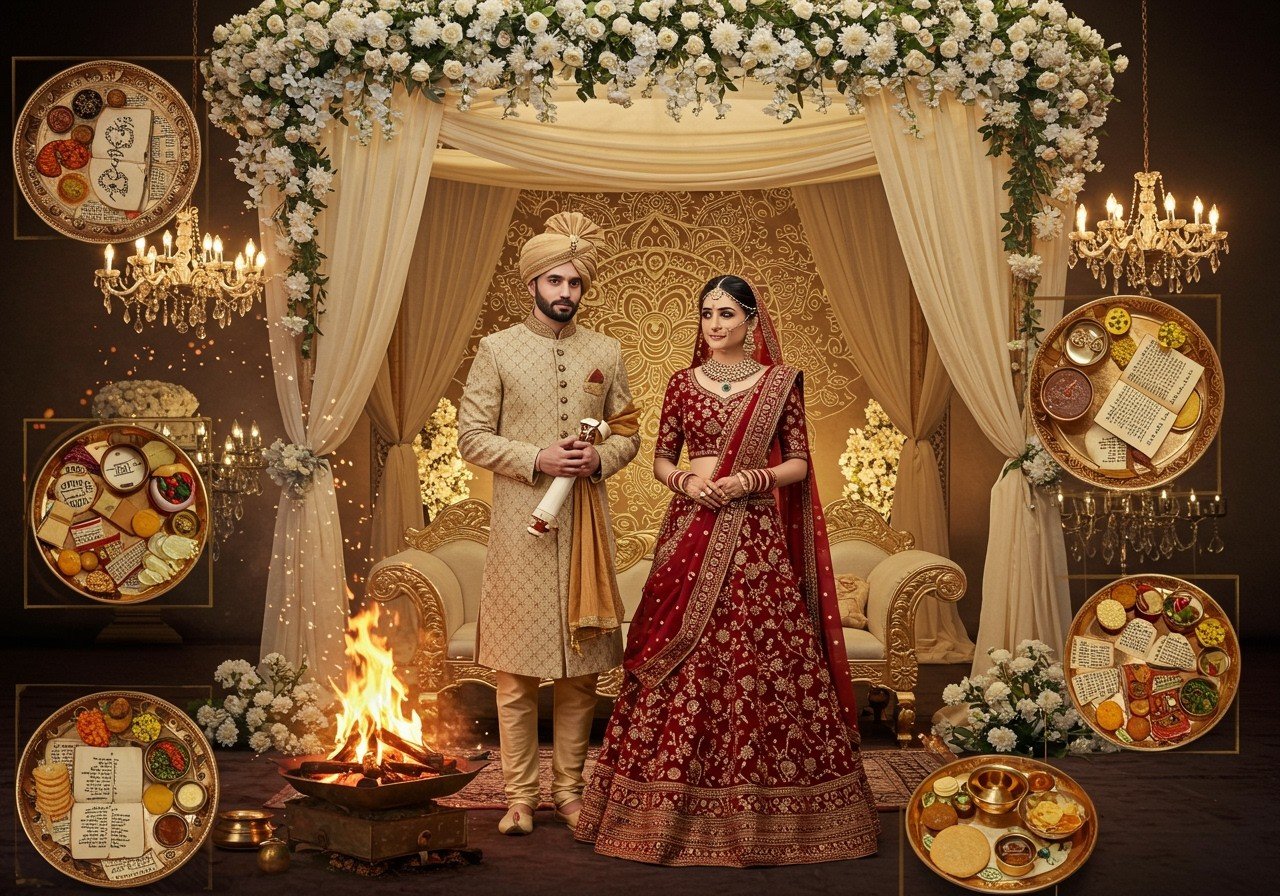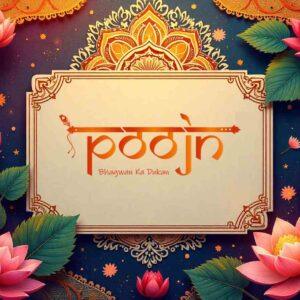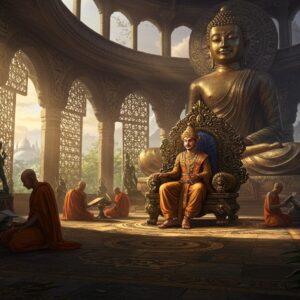
The Kayastha community, known for its rich intellectual and cultural heritage, celebrates weddings with a unique blend of ancient rituals and joyous festivities. For those seeking to honor their heritage while embracing modern conveniences, understanding these traditions is paramount. This guide offers a glimpse into the beautiful tapestry of Kayastha matrimony.
Embarking on the Kayastha Matrimonial Journey
Kayastha matrimony is more than just the union of two individuals; it’s the intertwining of two families. The community values education and professional accomplishments, reflecting their historical roles in administration and scholarship. Traditional matchmaking often begins with Lagna Patrika, the matching of horoscopes to ensure a harmonious union. The Roka and Mangni ceremonies solidify the families’ commitment, marking the official beginning of the wedding preparations.
Pre-Wedding Rituals: A Tapestry of Traditions
Kayastha weddings are a vibrant celebration of love and heritage, commencing with the Lagan Ceremony. Families formally exchange invitations (Lagan Patrika) along with symbolic gifts like a silver-covered coconut, betel nuts, and gold-covered barley. The bride’s family also presents clothes, sweets, dry fruits, and fresh fruits to the groom and his family, signifying the auspicious start of the wedding journey.
The Tilak Ceremony follows, where the bride’s brother and male relatives visit the groom’s home, bearing gifts of silverware, clothes, sweets, dry fruits, and jewelry. This heartwarming gesture symbolizes the bride’s family’s acceptance of the groom and their blessings for the couple’s future.
The Haldi Ceremony (Haldi Kutaai) is a vibrant and joyous occasion. Women, dressed in traditional attire, prepare a turmeric paste at the groom’s home. This paste, a symbol of purification and blessings, is then sent to the bride’s home to be applied to both the bride and groom. The ceremony is filled with laughter and joyful anticipation.
The Mehndi Ceremony is a delightful pre-wedding ritual filled with laughter and celebration. The bride, along with her friends and female relatives, adorns her hands with intricate henna designs. Uniquely in Kayastha weddings, the groom also applies mehndi as a symbol of good luck (shagun), adding a special touch to this cherished tradition.
The Khayamandap ceremony brings both families together in a joyous celebration of song, dance, and feasting. The highlight of this ritual is the setting up of the mandap, a sacred canopy that symbolizes the space where the wedding rituals will take place. This vibrant gathering fosters a sense of unity and excitement for the upcoming wedding.
Wedding Day Rituals: Sacred Bonds and Blessings
On the wedding day, the Mandapchadan ritual takes center stage. Male members of the groom’s family erect the mandap using bamboo posts, banana stumps, and mango leaves. A “harish” made of wood is placed in the center, signifying the sacred space where the couple will exchange vows.
The Mandapagaman ritual is a unique Kayastha tradition that pays homage to Lord Chitragupta. The groom, representing the deity, uses ink to write the bride’s initials on a holy page, symbolizing his commitment to a truthful union and connecting the couple to their cultural heritage.
The Jaimala ceremony is a beautiful exchange of garlands between the bride and groom. This symbolic act signifies their mutual respect, acceptance, and the beginning of their journey together as life partners.
Sindoor Daan is a poignant moment where the groom applies sindoor (vermilion) to the bride’s hair parting. This sacred act signifies her new status as a married woman and her lifelong commitment to her husband.
Kanyadaan, a deeply emotional ritual, marks the official handing over of the bride’s responsibility from her father to the groom. This signifies the father’s blessings and his trust in the groom to care for his daughter.
Other Notable Traditions: Continuing the Celebrations
Tikhati Mejwani is a grand feast hosted by both families for their close relatives. It is a time for joyous celebration, strengthening bonds, and sharing happiness.
The Imli-Ghutna ritual, performed by the groom’s maternal uncle and aunt, is a symbolic gesture to ward off any negative energy and ensure a smooth and happy married life.
The Sangeet Night, a pre-wedding event filled with music and dance, brings both families together in a vibrant celebration. This joyous occasion is a perfect blend of tradition and modern entertainment.
Poojn.in (https://www.poojn.in) offers a wide selection of items perfect for these beautiful traditions. Whether you need a traditional puja thali, sacred threads, or specific ritual items, you can find authentic and high-quality products on our website. We also offer convenient pan-India delivery, ensuring that you have everything you need for your special day.
For those interested in delving deeper into Hindu traditions and rituals, Poojn.in offers informative blog posts like “The Power of Yoga, Meditation, and Ayurveda: Ancient Hindu Practices” (https://www.poojn.in/post/16951/the-power-of-yoga-meditation-and-ayurveda-ancient-hindu-practices) and “Hindu Wedding Traditions: Rangoli Designs and Their Significance” (https://www.poojn.in/post/16954/hindu-wedding-traditions-rangoli-designs-and-their-significance).
Embracing Tradition with Modernity
Kayastha weddings beautifully blend time-honored customs with modern elements, incorporating choreographed dances, destination weddings, and virtual ceremonies. This harmonious blend ensures that these celebrations are both meaningful and memorable.
FAQs: Addressing Your Queries
What distinguishes Kayastha weddings? Kayastha weddings are unique for their blend of traditional Vedic rituals and subtle Mughal influences. The ceremonies are vibrant and memorable, filled with distinctive customs like Haldi, Mehendi, and Baraat. This blend creates a unique cultural experience.
Tell me about Kayastha brides and grooms. Kayastha brides and grooms come from a community known for its literacy and cultural richness. They often seek partners who appreciate tradition while embracing modern values, seeking a balance between heritage and contemporary life.
What rituals are typically performed in a Kayastha wedding? Kayastha weddings typically include rituals like Ganesh Puja, Mandap ceremony, and Satyanarayan Katha, all aimed at seeking divine blessings for a prosperous and happy married life. These rituals form the heart of the wedding ceremonies.
Why are Kayastha weddings known for their elaborate celebrations? The Kayastha community believes in celebrating the union of two families with grandeur and joy, filling the celebrations with music, dance, and lavish feasts. This reflects their value of community and togetherness.


